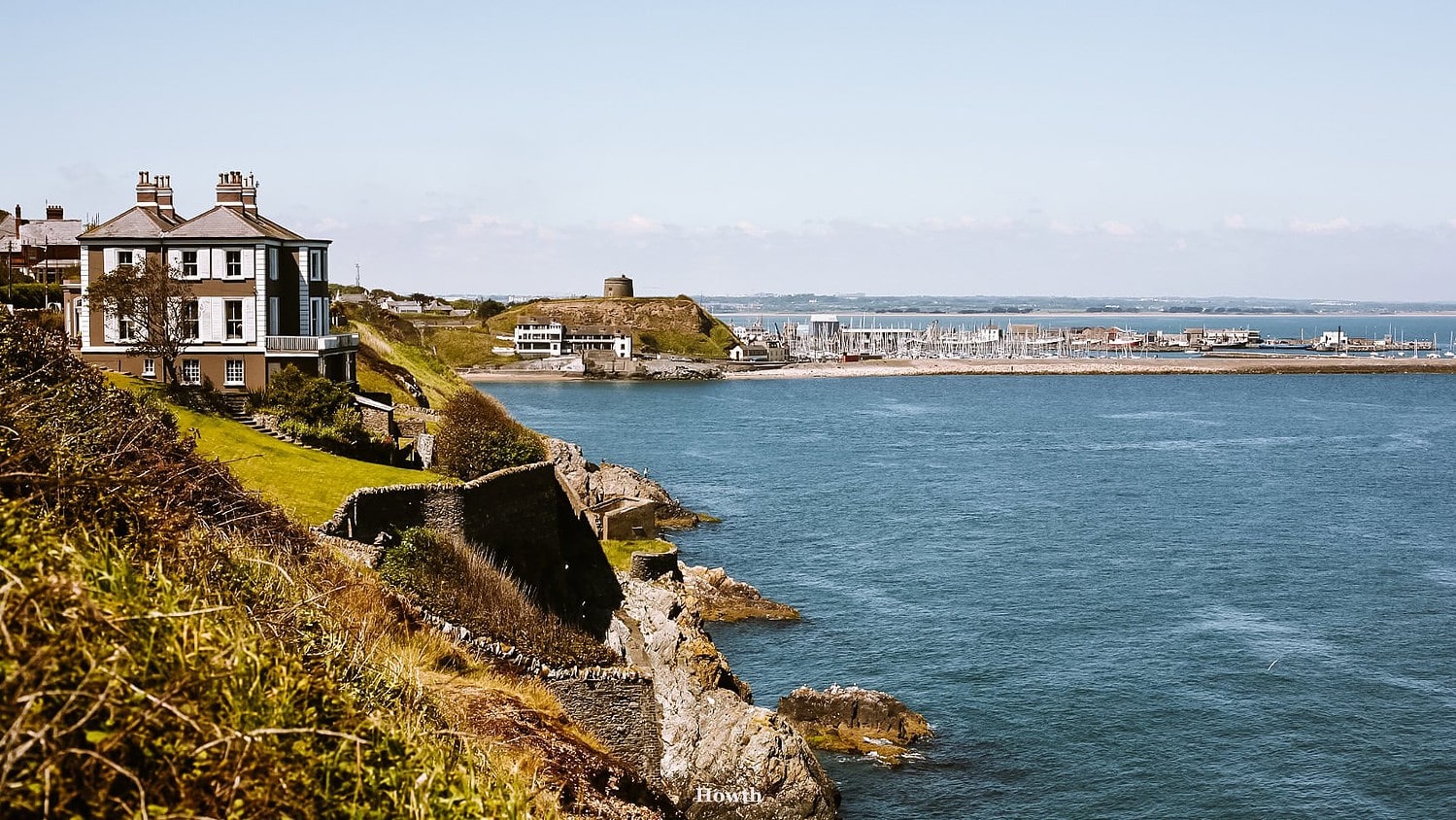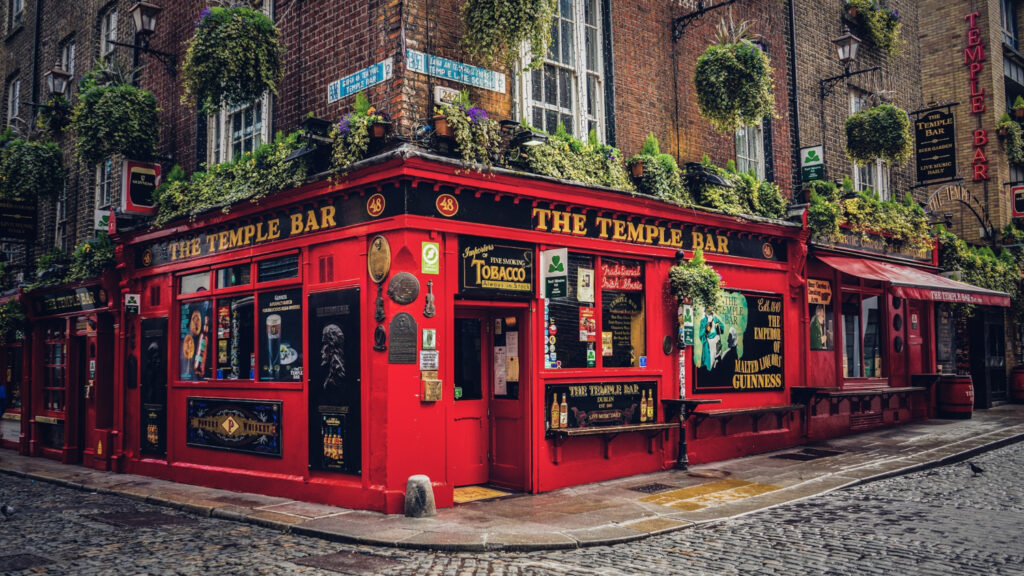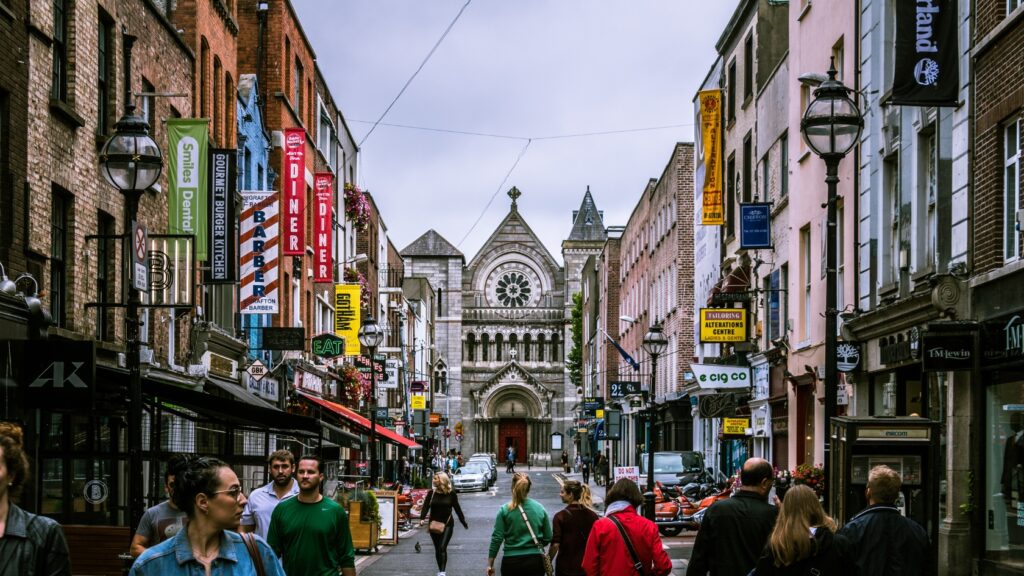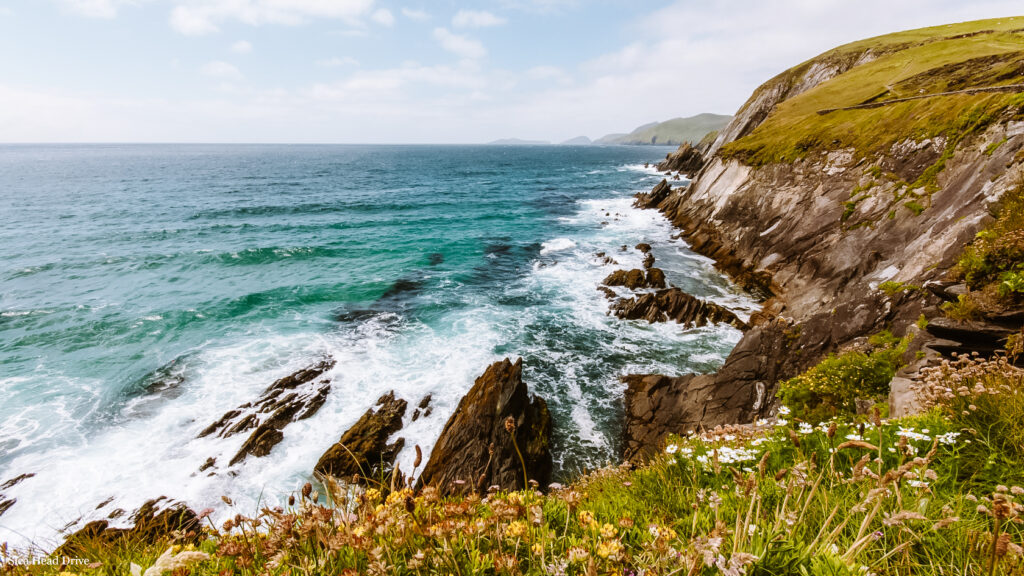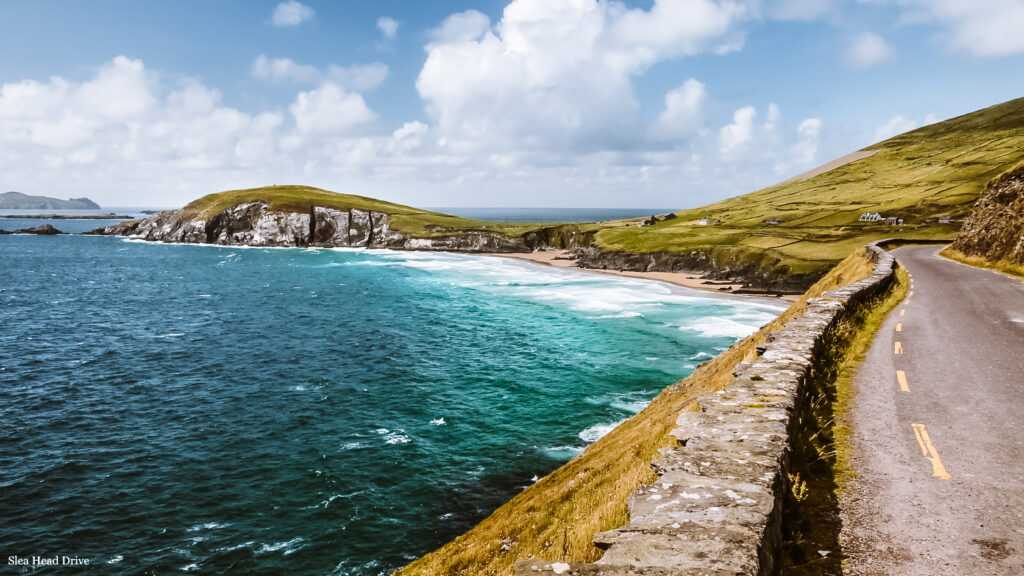Ireland is known for its lush countryside, picturesque towns, archaeological sites and medieval castles. It would be a great shame to visit Dublin and not take at least one trip around the area. Read our tips for day trips from Dublin.
From UNESCO sites to cliff-top trails to the third most beautiful garden in the world. Dublin’s surroundings are as colourful and fun as Dublin itself. Let’s take a look at what’s in store so you can start planning your perfect itinerary for your visit to Dublin.
Dublin is a good base for exploring Ireland. You can reach many interesting places from here. You can use public transport (trains, buses), rent a car or go on a trip with a bus tour, where everything will be arranged for you.
Practical tips before you go on a day trip from Dublin
Before we show you what to visit around Dublin, here are some practical tips:
Buses and trains in Ireland
I recommend using the official app to plan train and bus connections. It’s clear and the map will help you find your way around. Google Maps works just as well.
If you are looking for train services only, check out the Irish Rail website. They offer you all train connections at a glance, including the price.
Find out more about transport in and around Dublin in our Dublin guide.
There are also a number of bus tours departing from Dublin to visit the best of Ireland. In addition, the prices are often very reasonable considering what you will see and that they will handle everything for you. Specific tips for bus tours can be found in the article.
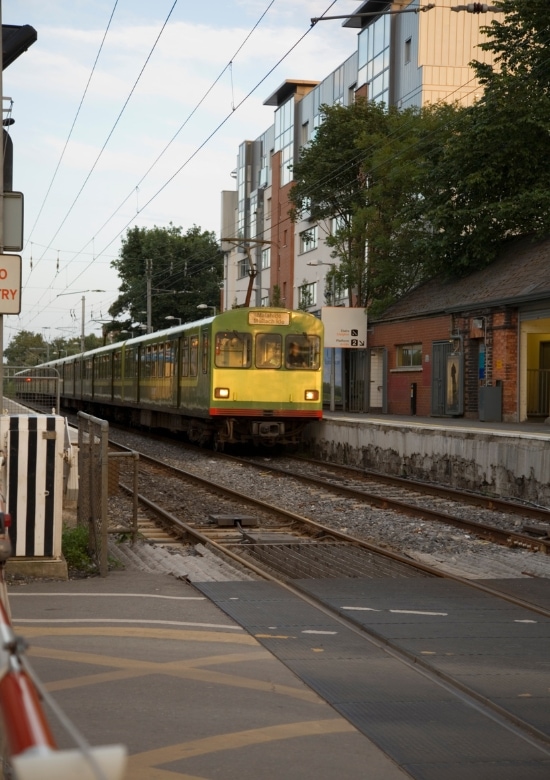
Car rental in Ireland
A car is the best way to explore all the places to visit around Dublin.
For car rental we used Rentalcars.com. Just fill in the details and show your ID card when you collect it. The price also includes insurance and free cancellation.
You can pick up your car at the airport or at several other locations in Dublin (the pick-up location is always written on the car).
Please note: Please remember that in Ireland and the UK you drive on the left. I recommend choosing medium or smaller car models. In some areas, the roads are narrow and if you encounter a bus in the opposite direction (and not just a bus), you may have trouble avoiding it.
Hiking in Ireland
While Google Maps is great in many cases, I recommend using other methods to find hiking trails. A wide selection of trails can be found at sportireland.ie.
Or follow the on-site signage, which is great in Ireland. There are also information boards with maps and signposts. In tourist areas, the visitor centres will be able to advise you and have maps available.
It’s raining in Ireland. It often rains. For this reason, the paths are often waterlogged and muddy. Proper hiking boots and a waterproof jacket are a must.
Best Day Trips from Dublin
1. Howth
Howth is a peninsula with a fishing town where you can stroll around the harbour, go to a seafood restaurant or take one of the hiking trails.
The peninsula is famous for its lighthouse cliffs, which may not be as imposing as those on the west coast of Ireland, but are impressive nonetheless.
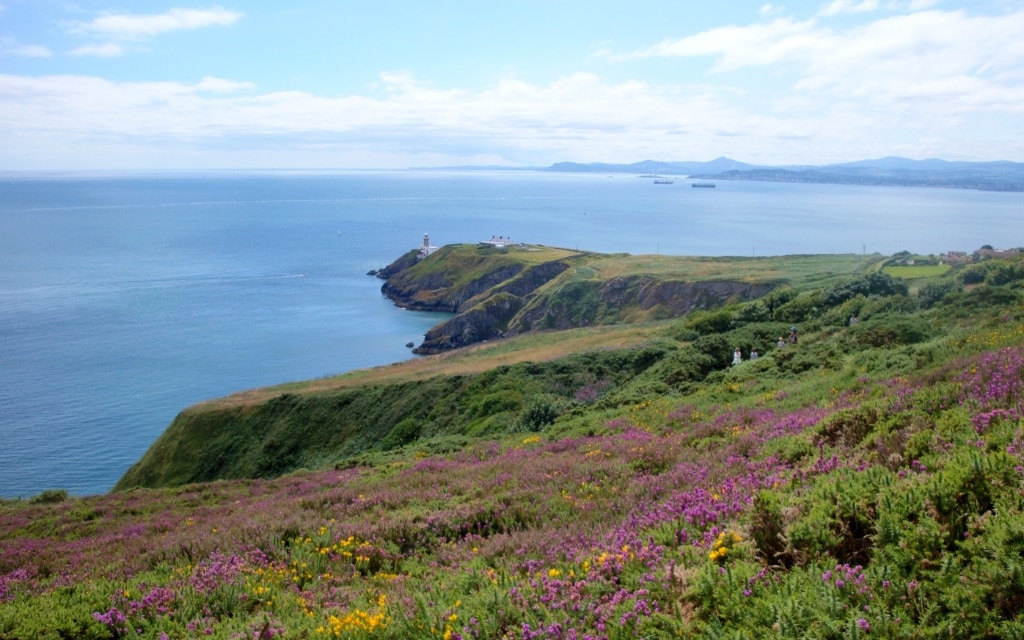
The trails start at the train station and there are several difficulty levels to choose from. You can choose from the easy blue route to the longest purple route. The route leads along a beaten path along the cliffs. In the rain, the path can be muddy – it takes proper shoes and a sure step. Otherwise, however, the route is also feasible with children.
All trails go through The Summit (there is also free parking here), where you can get great views of the lighthouse in the distance. There are several cafés and restaurants.
There is an open market right next to the station where you can buy local products (especially seafood and delicious desserts). Just behind the station is the harbour with a lighthouse and a view of the opposite island.
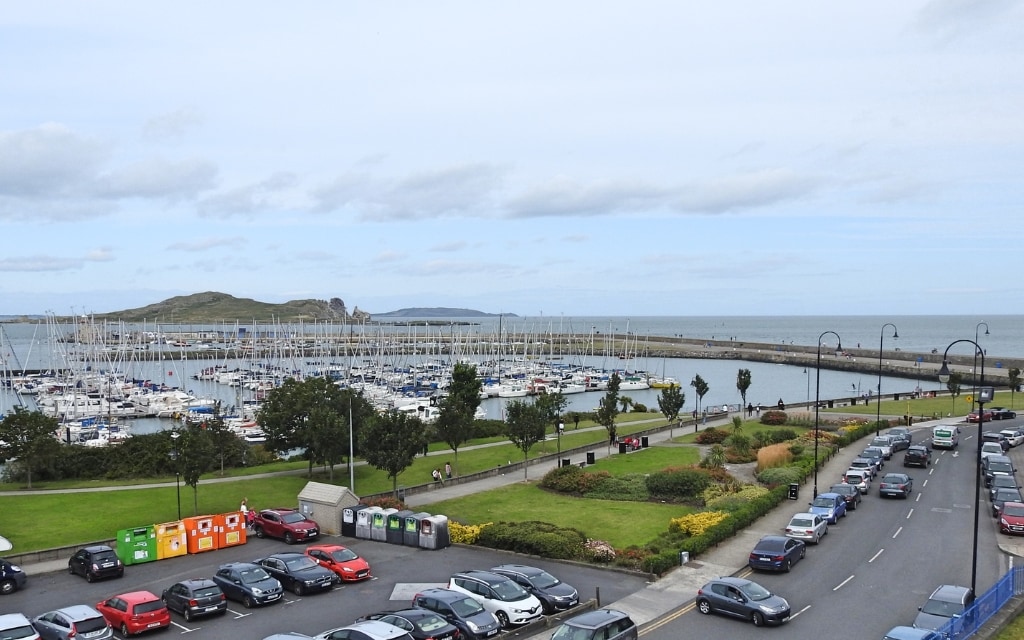
How to get to Howth
Howth is the most easily accessible of the list of attractions in and around Dublin. Located 30 minutes north of Dublin city centre, it is easily accessible by train, bus and car.
DART: At Connolly station, take the DART and get off at Howth terminus. A return ticket without a Leap Card costs €5 (€4 with a Leap Card). If you have a Leap Visitor Card (a Leap Visitor Card is not a Leap Card – see Dublin article), travel to Howth is included and you pay nothing.
Buses: From Dublin city centre, the H3 bus takes you to the Howth Peninsula. The journey takes about 45 minutes and with the Leap Visitor Card the trip is again included. Without a card, expect to pay approximately the same amount as DART.
The advantage of the buses is that they stop at several stations on the peninsula and terminate below the summit where the hiking trails converge (unlike DART where you have to get off at the station on the edge of Howth).
By car: there are several free car parks on the peninsula – right by the harbour or at the summit, where you can take one of the trails.
2. Killiney Hill Park
Killiney Hill Park is located south of Dublin. The park and its surroundings are full of attractions. I recommend taking the Killiney Hill Walk circular trail. The route is short (2.9 km), but the views from here are spectacular over Dublin and the sea.
And if that’s not enough for you, you can extend your route up Dalkey Hill, which is in the same park.
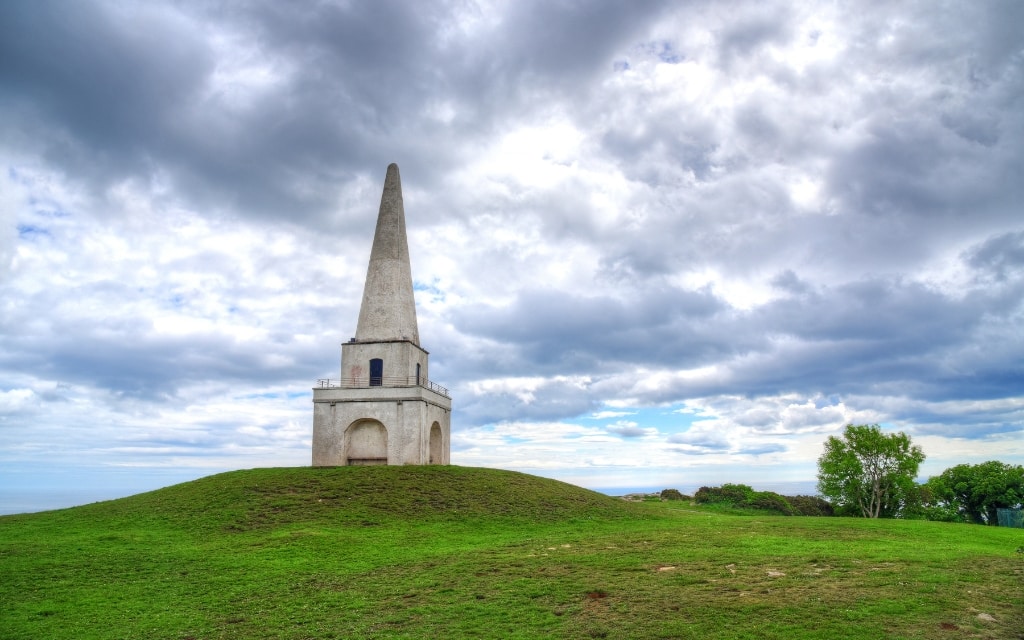
Killiney Strand is a sandy, rocky beach 2 minutes from the DART stop, where you can also fish.
If you get off the bus one stop earlier (Dalkey), after a while you will reach the coast at Hawk Cliff, where you can take a swim. There are stairs for easier access to the water. But most people jump straight into the sea. There are also several smaller beaches nearby.
How to get to Killiney Hill Park
DART: In Dublin city centre, get on the DART (with Leap Visitor Card included) and head south. Get off at Killiney station in 35 minutes. Here you will see signs to the beach and the park. Head along the road towards the park, which you can see on the high ground in the distance. In 20 minutes you will reach the steps that lead to Killiney Hill Walk.
Car: If you are driving, head towards Killiney Hill Park and park above Whiterock Beach. There is a free longitudinal car park (in good weather and at the weekend it can be full early). From here you can see the path into the forest on the other side of the beach.
Read: Things to do in Dublin
3. Brú na Bóinne
Brú na Bóinne is a fascinating place. If you are interested in history, be sure to head here. This is in fact one of the most important Neolithic collections in the world, comprising the great passage tombs of Newgrange, Knowth and Dowth. They are 5,000 years old and thus even older than the Egyptian pyramids or Stonehenge.
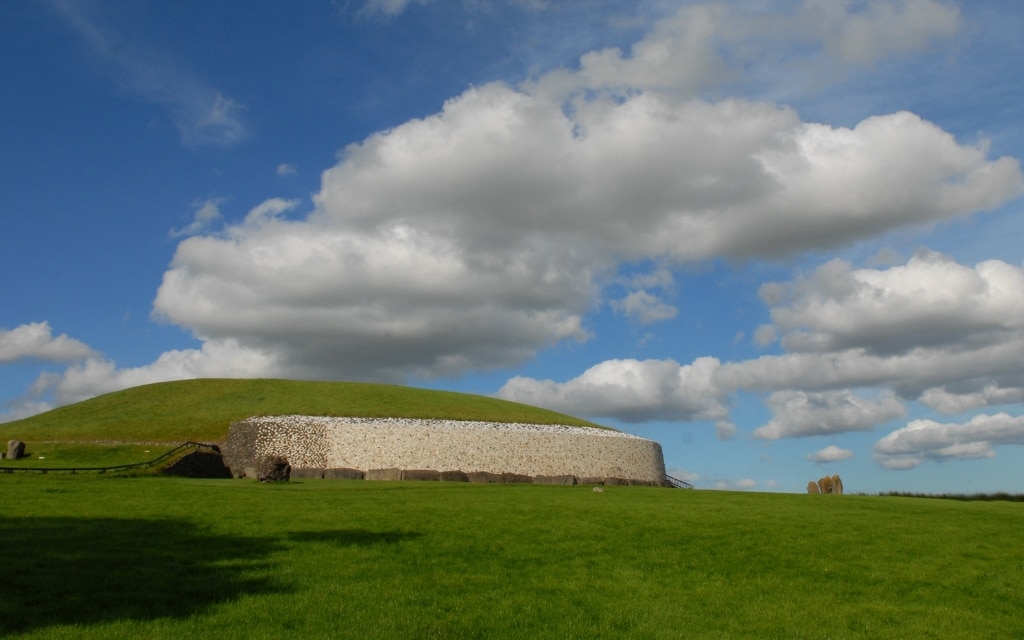
The tour starts at the visitor centre for Newgrange and Knowth (Dowth is not accessible from inside). Inside the centre you can visit an exhibition where you can learn more about the history of Brú na Bóinne, see artefacts and see how people used to live, grow and breed. Great interactive exhibition.
From here a free shuttle bus runs in small groups to Newgrange or Knowth (Knowth is closed in winter – it opens in early March). With a guide you can then visit the tombs inside (about 20-30 minutes).
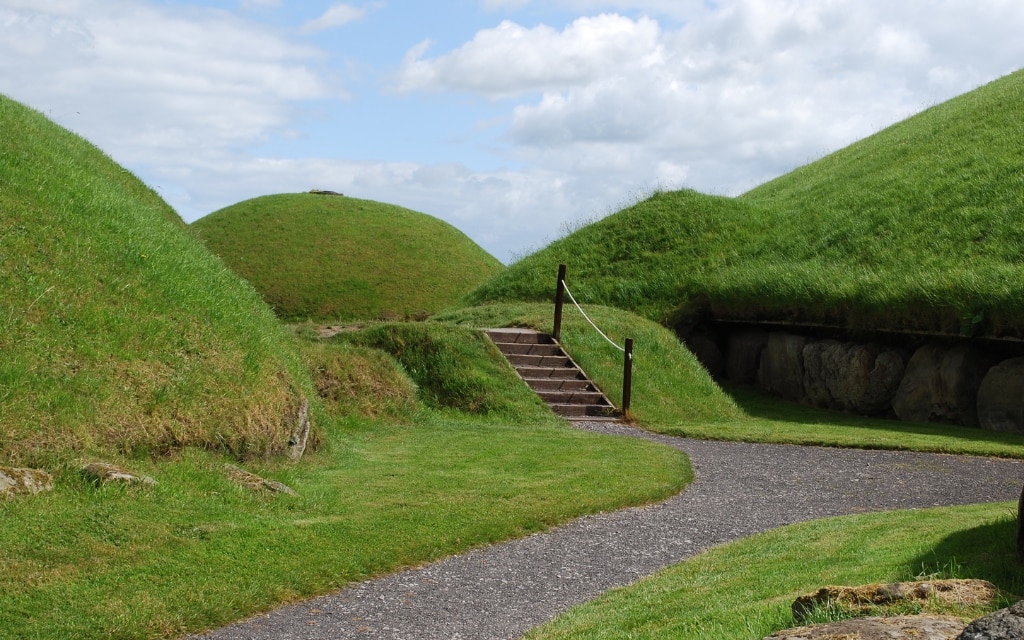
Visits must be booked in advance. There are several types of tickets to choose from. You can choose one of the tombs or both tombs including the visitor centre. Even with a tour from the outside, expect to spend around 2.5-3 hours visiting the whole area. More information can be found on the official website.
How to get to Brú na Bóinne
Brú na Bóinne is located just outside Drogheda, about 50 km north of Dublin. There are no direct buses or trains. The best option is therefore a car. The journey along the M1 motorway (or N2 – depending on traffic) takes around 40 minutes.
Read our detailed guide on how to rent and drive a car in Ireland (prices, requirements, procedure, driving tips and what to avoid).
4. Cliffs of Moher
The Cliffs of Moher are not to be missed here, even though they are not near Dublin. 200 m high and 14 km long cliffs, which are among the largest in the world. Thanks to this, they are on the UNESCO list. The caves in the cliffs also appeared in several scenes of Harry Potter and the Half-Blood Prince.
This is one of the most beautiful places to visit in Ireland and definitely worth a day trip from Dublin.
If you head here in spring and summer, you might be lucky enough to spot puffins.
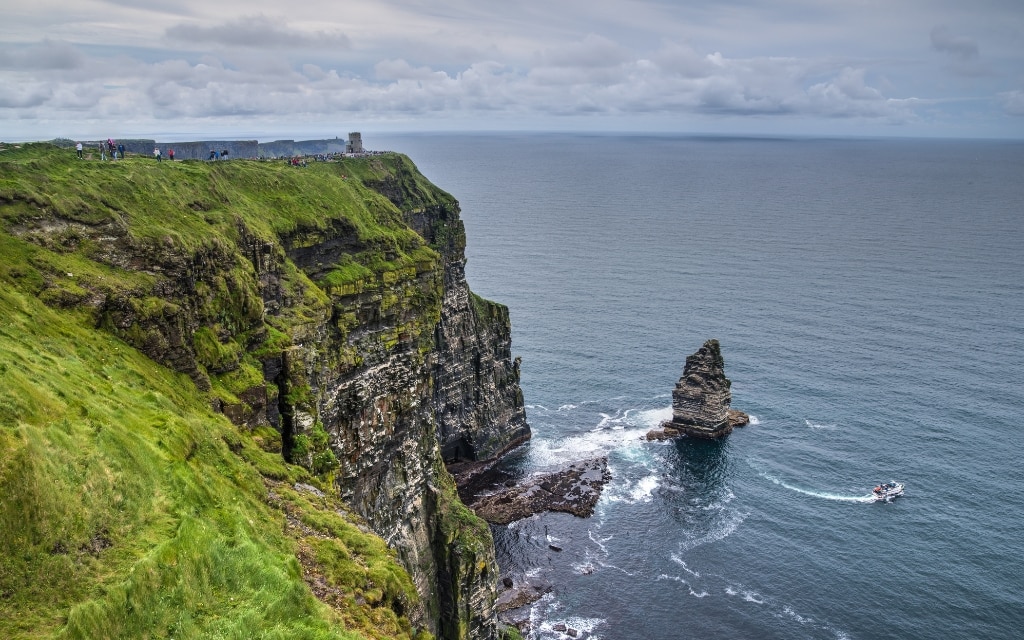
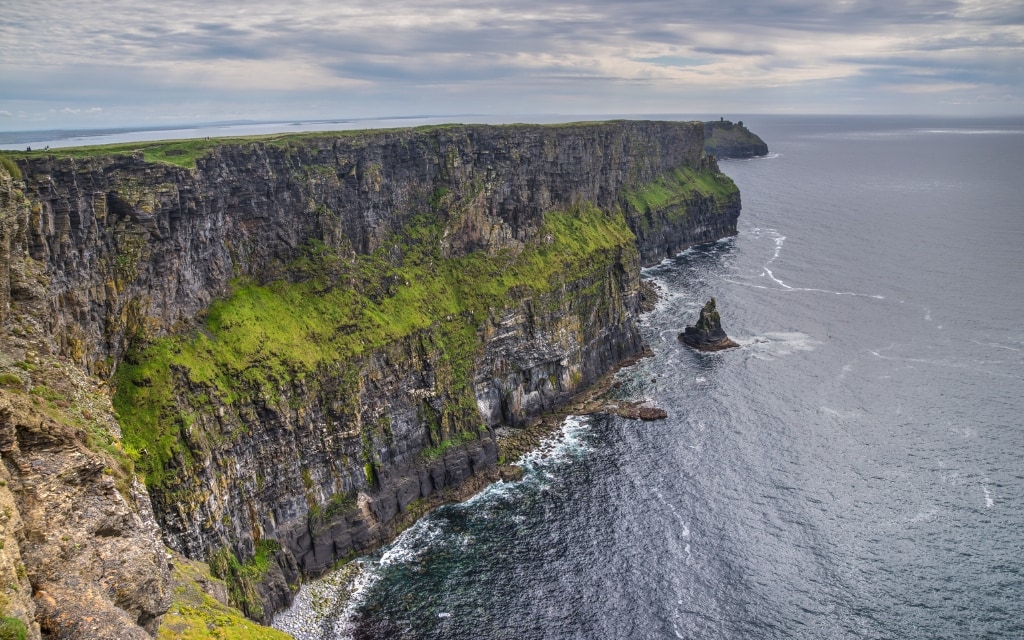
Practical information before visiting the Cliffs of Moher
The cliffs lie between the towns of Doolin and Liscannor. A visitor centre is located roughly in the middle of the highest point. You can park in all three places – at the visitor centre, in Doolin or in Liscannor.
Parking at the visitor centre is the most expensive, but you also get a visit to the interactive exhibition at the centre included. The visitor centre is an interesting building in itself – modern and environmentally friendly.
If you have limited time, go here because the views are the best and the Cliffs of Moher are the highest. For up-to-date information on admission fees and opening times, please visit the official website.
Parking in Liscannor or Doolin is significantly cheaper. From both places you can then take the trail along the coast (6-8 km depending on the route you choose). Don’t forget proper shoes as the trail can be slippery and muddy.
The visit to the Cliffs of Moher is free of charge.
How to get to Cliffs of Moher
The Cliffs of Moher are located on the west coast of Ireland, just the other side of Dublin.
Public transport: the cliffs can be reached by trains and buses (usually with 1 change; there are no direct buses or trains). The downside is that you will spend 4.5-5 hours each way.
Car: A better option is to rent a car in Dublin and take a trip to the cliffs on your own. The journey takes about 3 hours and is mostly on the motorway.
Take the direct bus to the Cliffs of Moher. Buses leave from Dublin City Gallery in the city centre (there is a bus stop) and make a circular route through some of the most beautiful places on the west coast. You’ll explore the Cliffs of Moher, the lunar landscape of The Burren National Park and the beautiful town of Galway. Plus, it’s a great price that includes entry to the parks. You don’t have to worry about anything, the bus will take you to your destination.
5. Wicklow Mountains
The Wicklow Mountains are a rugged, sometimes untouched mountain range about an hour’s drive from Dublin. If you’re looking for a place to go hiking, this is one of the best places near Dublin. It’s not a mountain range of high altitudes, but the views here are definitely worth it.
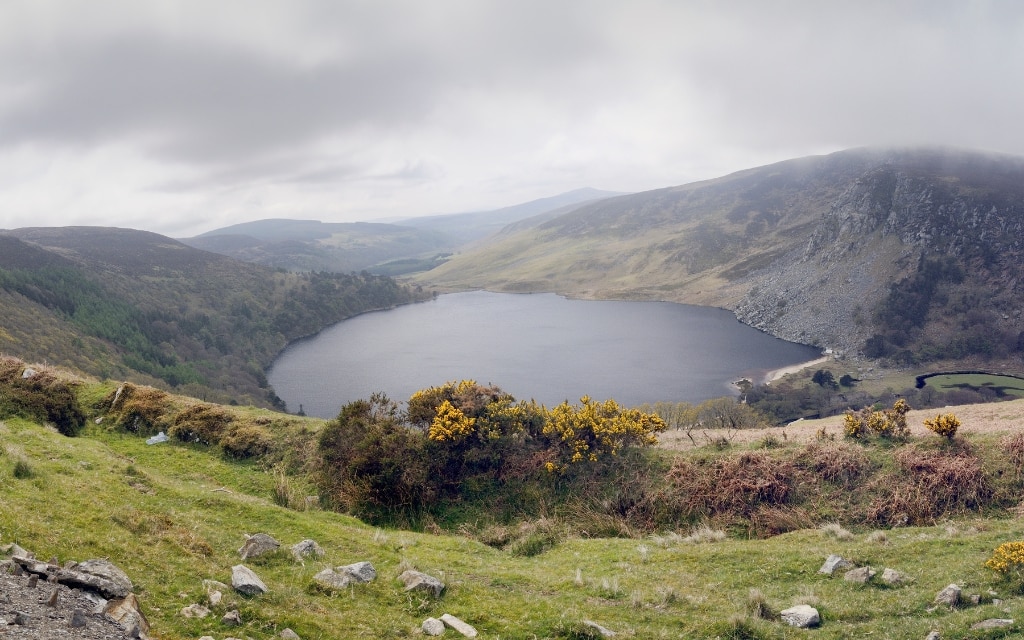
Take one of the hiking trails and enjoy a visit to the only national park in the east of Ireland. Plus, it’s the largest mountain range in Ireland, so there’s plenty of choice of hiking trails. All the hiking trails and other tips on what to do in the Wicklow Mountains can be found on the official website.
If you are driving, I can recommend Sally Gap for us. This is a mountain pass from where there are truly spectacular views of the Wicklow Mountains. This is where the scenery for the film P.S. I Love You (and other films) was shot.
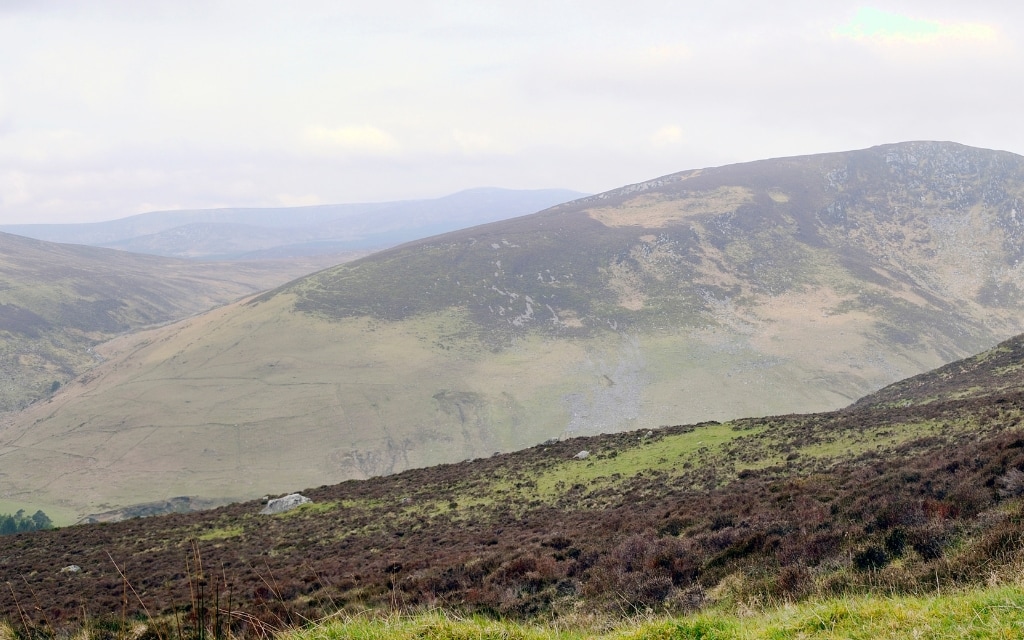
How to get to the Wicklow Mountains
By car: the Wicklow Mountains are 30-60 minutes from Dublin. It depends on where exactly in the mountain range you are going, because it is extensive. A car is the easiest and best way to visit the Wicklow Mountains.
Coach tour: hop on a sightseeing bus and enjoy the Wicklow Mountains, Glendalough and anchor in Kilkenny in the afternoon. Check out the route description at this link.
6. Glendalough
Glendalough is the most popular place in the Wicklow Mountains. That is why it deserves a separate mention. And why come here? Under the name Glendalough you can imagine the ruins of a monastery complex from the 6th century. century, which are scattered around the area. Several scenes from Braveheart were filmed here.
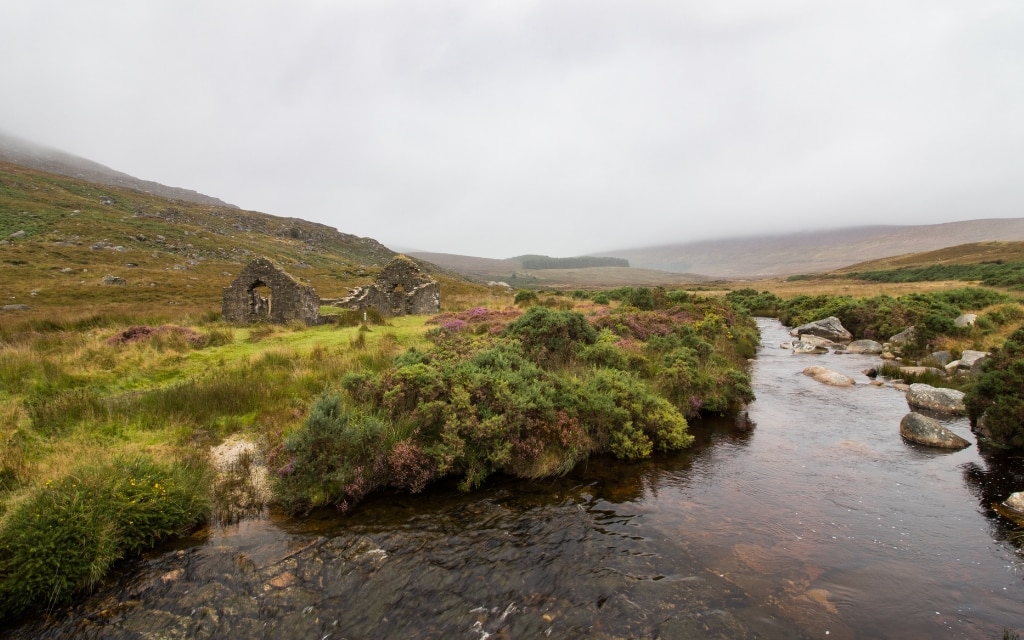
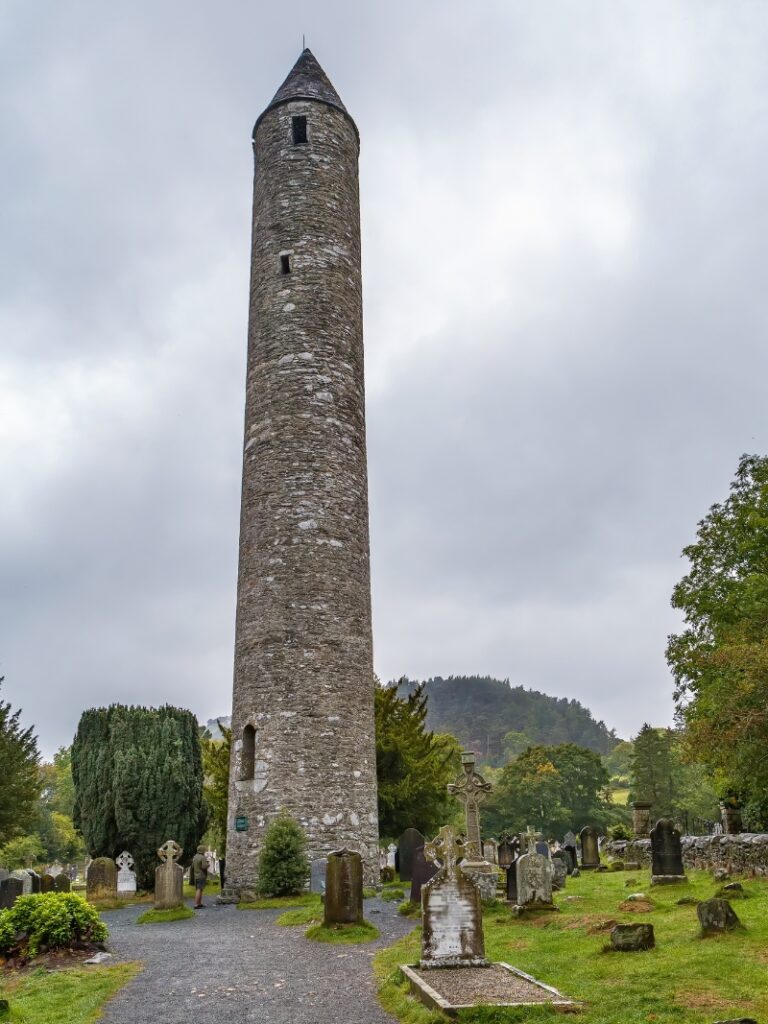
There is a visitor centre, refreshments and paid parking (4 € in 2023). From here there are trails of varying difficulty. The surrounding countryside and the Upper and Lower Lakes, above which you can climb the blue trail and enjoy the view of the surrounding area.
Prepare for Glendalough to be one of the most popular day trips around Dublin and it’s packed in high season. Therefore, it is best to arrive early in the morning or later in the afternoon to avoid the biggest crowds.
How to get to Glendalough
Car: Glendalough is located about 60 km south of Dublin. By car, you’re here in less than an hour. You can park directly in Glendalough for €4.
Bus: Take the St Kevins bus in Dublin city centre to the Glendalough Visitor Centre. The journey takes 1 h 20 min and a return ticket costs 23 €.
Coach tour: hop on a sightseeing bus and enjoy the Wicklow Mountains, Glendalough and anchor in Kilkenny in the afternoon. Check out the route description at this link.
7. Powerscourt House & Gardens and Powerscourt Waterfall
Powerscourt House is famous for its gardens – which were named the third most beautiful gardens in the world by National Geographic. Ornamental ponds, fountains, terraces, sculptures, formal gardens…all with views of the Wicklow Mountains await you as you walk through.
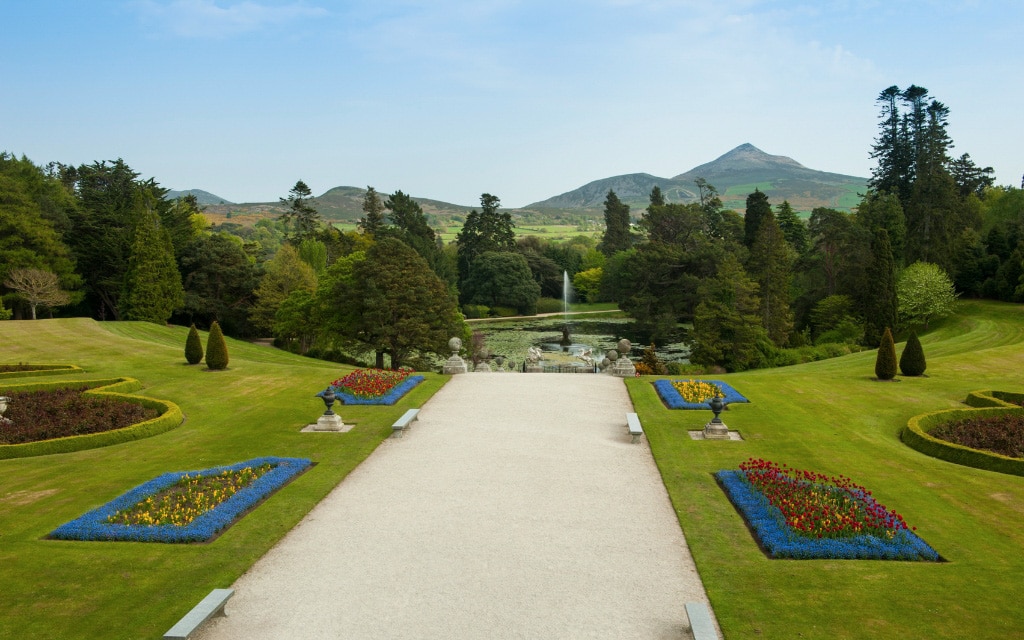
The castle is also worth seeing, and is ranked in the Lonely Planet Guide’s Top Ten Houses and Mansions Worldwide. It is mainly open for exhibitions. For information on admission and opening hours, please visit the official website.
The Powerscourt waterfall is located near the castle. At 121 metres high, it is the highest waterfall in Ireland. You can walk around the waterfall and enjoy the view of the waterfall from different angles (30 minute walk). In addition, there are barbecues, picnics right under the waterfall and there are also social facilities.
Admission to the waterfall is paid and subject to opening hours.
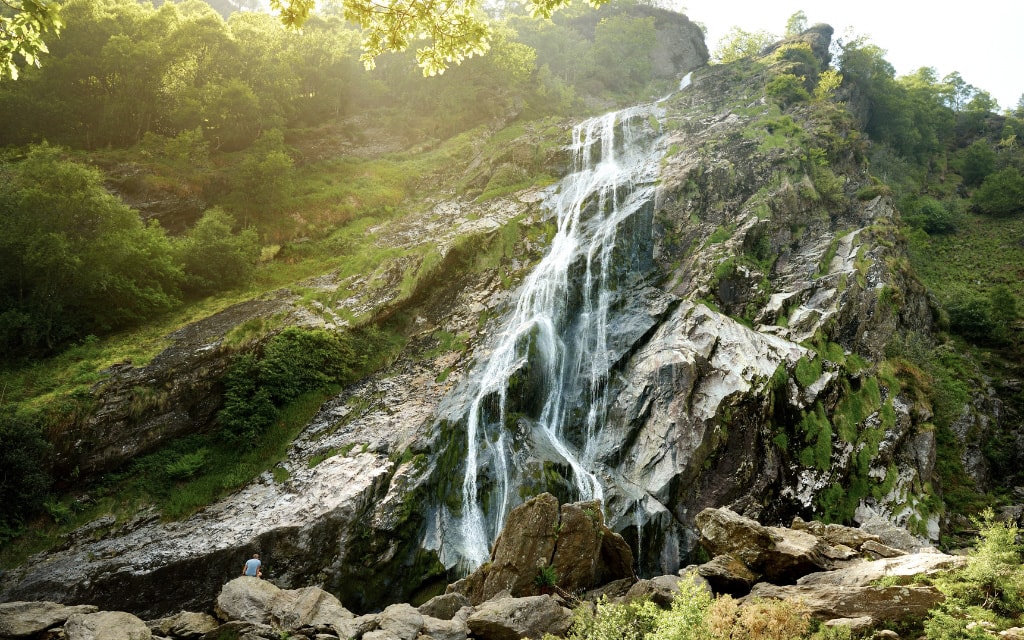
How to get to Powerscourt House & Gardens
DART: Go south to Bray Station, where you change to bus 185. This will take you to the picturesque town of Enniskerry, from where you will pass the not-so-busy road to Powerscourt House. You will walk for about 25 minutes along a well-maintained path, partly with views and partly around the forest. A popular walk from Enniskerry. The transfer and walk to Powerscourt House takes approximately 1 hr 45 min.
Bus: In Dublin, take the direct bus 44 (Dublin Bus) on O’Connolly Street, which will take you to Enniskerry in one hour. From here you will walk to Powerscourt House (see previous point). With the Leap Visitor Card, the bus is included. With a Leap Card, one trip will cost you €2 (as part of The TFI 90 Minute Fare) and without a Leap Card €2.60.
Car: Powerscourt House & Gardens is the easiest to get to by car – from Dublin you’ll be here in about 30 minutes, depending on where you’re starting from. There are plenty of parking spaces right next to the castle.
As for Powerscourt Waterfall, the best option is a car. The waterfall is about 6 km from Powerscourt House & Gardens. You can park a short distance from the waterfall in a designated parking lot.
Read our detailed guide on how to rent and drive a car in Ireland (prices, requirements, procedure, driving tips and what to avoid).
8. Hill of Tara
Now let’s imagine another ancient site. Tara Hill is known from the Stone Age, when a passage tomb was built here. It reached its greatest importance in the Iron Age, when it became the seat of the High Kings of Ireland. All the old Irish roads led here.
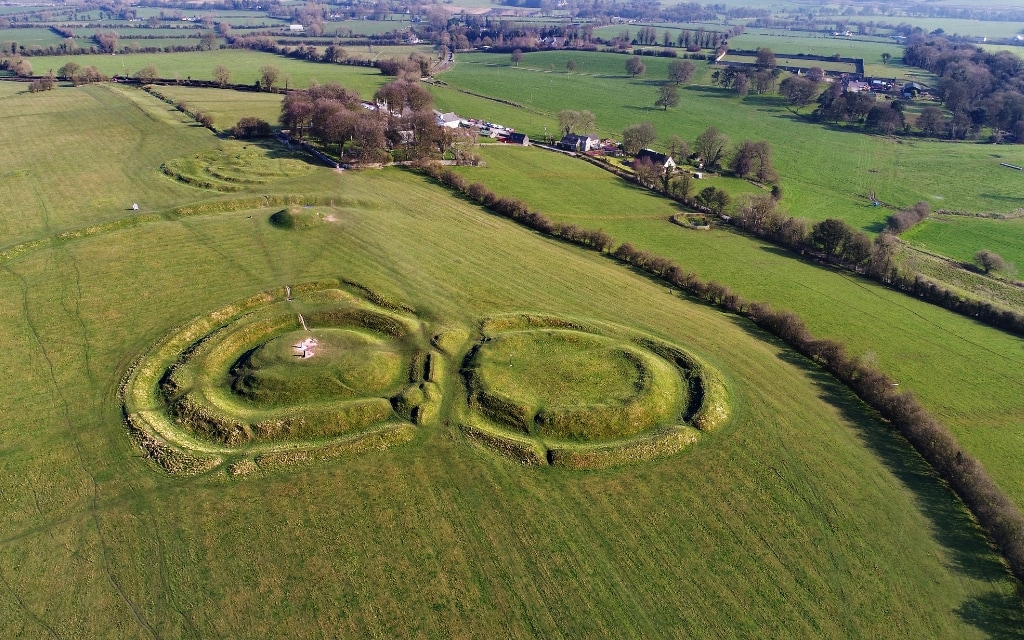
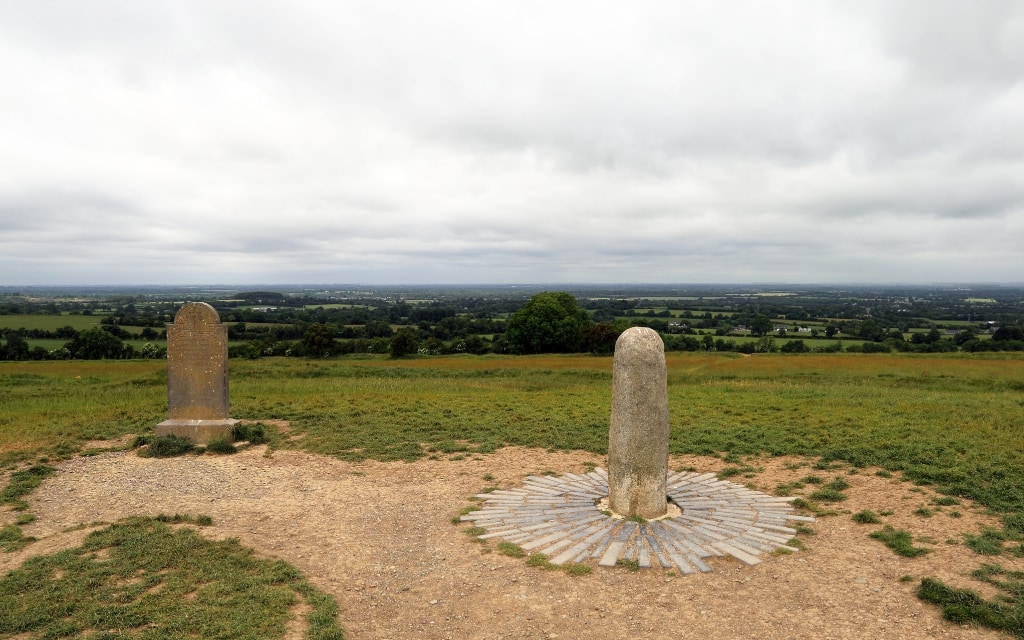
St Patrick also passed through here, elevating the Hill of Tara to a symbolic place. Today, you will only see traces of that time, but it is still a magical place full of history that is definitely worth a visit.
Right at the top is the Lia Fáil (Stone of Destiny), where the ancient kings of Ireland were crowned.
Hill of Tara is free to access. I recommend checking the official website for updates.
How to get to Hill of Tara
Bus: The Hill of Tara can be reached by bus 109 from Dublin city centre. Get off at Tara Cross, from where you walk another 20 minutes to the top. The price of a return ticket is 12 € and the bus takes just over an hour. You can buy tickets online.
Car: Car is the easiest option to visit Hill of Tara. You’re half an hour from Dublin. You can park in one of the two car parks just below the hill. There is also a café with a souvenir shop.
☞ Is travel insurance to Ireland necessary? Your European Health Insurance Card (EHIC) will cover necessary medical treatment due to illness or accident. However, the insurance does not cover any deductibles (for example, for hospitalisation, dental treatment or medicines). It is the travel insurance that covers these deductibles, as well as situations such as trip cancellation, loss of luggage or liability insurance. Find out more about, what travel insurance covers.
9. Kilkenny
An ancient Irish town with narrow streets, historic monuments and Tudor houses. That’s exactly what Kilkenny is.
The city of Kilkenny was founded in 11. century and was the capital of Ireland in the Middle Ages. As a result, it is literally steeped in history and places of interest – a medieval castle with extensive gardens, the historic Medieval Mile, St Canice’s Cathedral and many more.
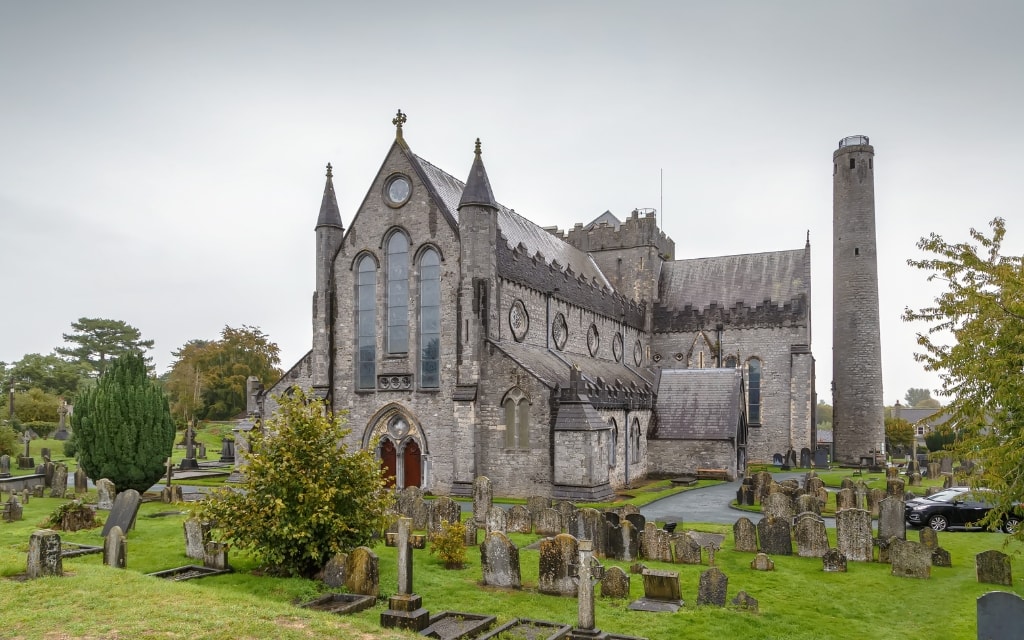
Stroll through cobbled streets surrounded by arts and crafts shops, visit breathtaking monuments or enjoy a goulash and beer in one of the historic beer halls.
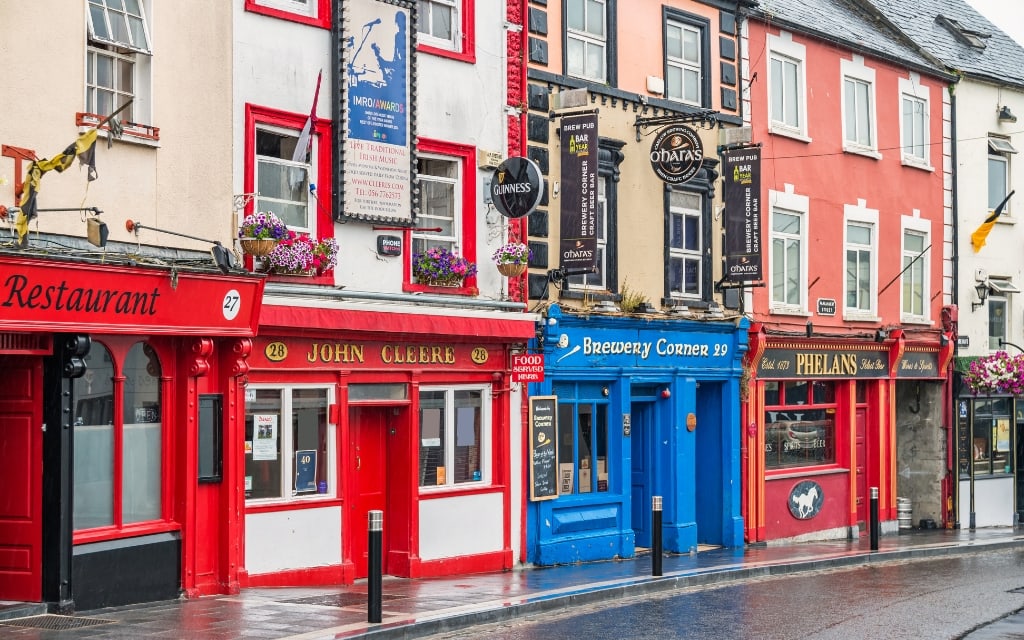
How to get to Kilkenny
Bus: Directly from Dublin city centre, the 600 bus runs via Kilkenny to Cork in the south of Ireland. The journey to Kilkenny takes 1h 45 min and the ticket costs €12. You can book your Dublin Coach ticket online.
Train: There is a train to Kilkenney from Heuston station several times a day. The journey takes 1 h 30 min and the ticket costs around 12 €.
Car: Kilkenny can be reached by car in 1 h 30 min. Most of the journey is on motorways or expressways.
Guided tour: Hop on a sightseeing bus and enjoy the Wicklow Mountains, Glendalough and anchor in Kilkenny in the afternoon. Check out the route description at this link.
10. Giant’s Causeway
Giant’s Causeway is definitely not near Dublin. It does not even lie in the Republic of Ireland. Giant’s Causeway can be found in Northern Ireland. But it’s such an iconic place that you should consider visiting.
And it may be one of your greatest experiences when you visit Ireland (along with the Cliffs of Moher). That’s why it’s one of the most popular trips from Dublin, even though it’s a 3 hour drive away.
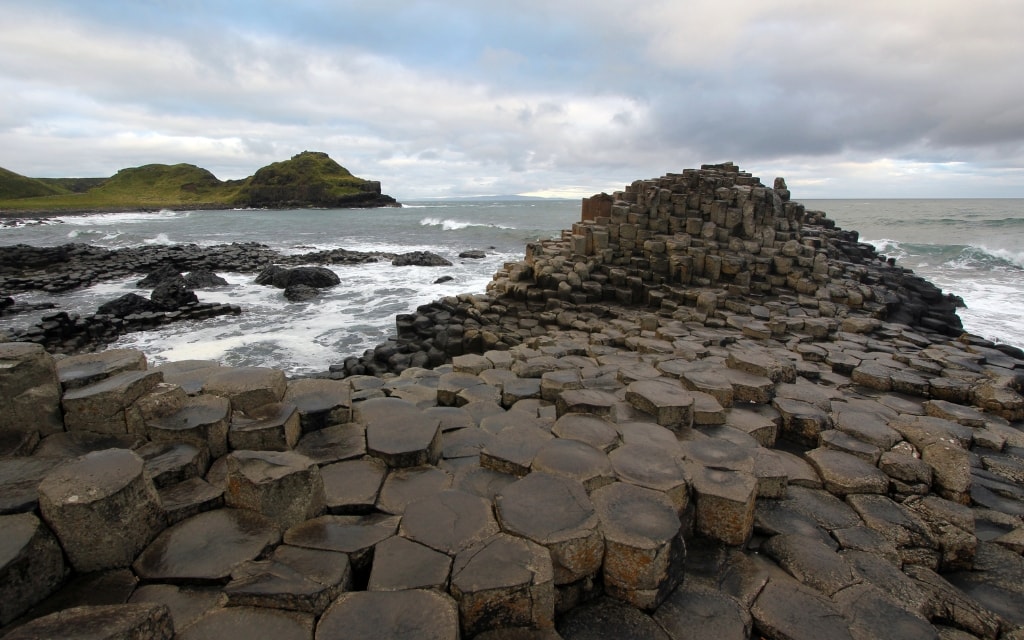
You can think of Giant’s Causeway as 40,000 basalt rocks fitting together. The natural phenomenon (is it really natural?) was the result of a volcanic eruption 60 million years ago.
But the legend sounds more interesting. According to this, the Irish giant Finn McCool was attacked by the Scottish giant Benandonner. Fionn took up the challenge and built a causeway in front of the North Canal. It was destroyed during their battle, creating the Giant’s Causeway.
The basalt cones can be walked freely. Just be careful in the wet, when it gets pretty slippery. There are also 4 trails to choose from to better explore the area (there are signs with maps on site for orientation, or you can get more information at the visitor centre).
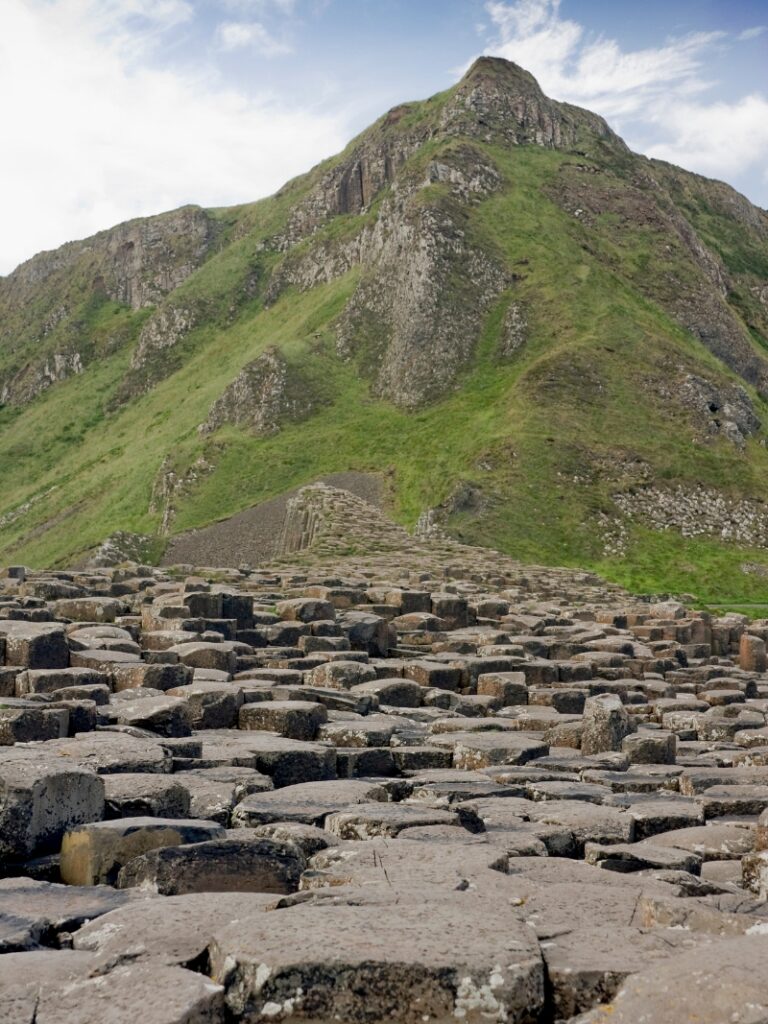
Practical information for visiting Gaint’s Causeway
Admission to Giant’s Causeway is free. If you are driving, the parking fee is £10. Or you can pay an admission fee, which includes the exhibition in the visitor centre, parking and a guided tour if you wish. It only costs a few extra pounds and the car park is right next to the visitor centre. More information here.
Please note: Northern Ireland is very accessible. For this reason, many people include it in their itinerary for visiting Ireland. Just be warned, you pay in British pounds. Fortunately, you can also pay by card in most places.
How to get to Giant’s Causeway
Car: From Dublin, Giant’s Causeway can be reached in about 3 hours via the M1 and then the M2. You can park just off Giant’s Causeway – parking without the visitor centre is £10, with the visitor centre a few pounds more (advance booking required – see link above).
Public transport: there are no direct buses or trains to Giant’s Causeway. Public transport with a transfer is also lengthy (over 5.5 hours).
Hop on a direct bus to Giant’s Causeway and take a sightseeing tour through some of Northern Ireland’s most beautiful places – the Dark Hedges, Giant’s Causeway and Belfast. Admission is included. You don’t have to worry about anything, the bus will take you to your destination. Once you’ve seen the place, you’ll be on your way. Check out the full route description at this link.
11. Bray Head Cliff Walk
Bray is a coastal town located about 40 minutes south of Dublin. There is a beach, a promenade and a popular marine aquarium. The promenade is nicely landscaped and lined with seaside villas. You can follow it all the way to the harbour. There are several cafés and restaurants nearby.
On the eastern edge of the town lies the Bray Head Nature Reserve. You can follow the path around the cliffs and enjoy the spectacular views of Bray and the sea. The trail is easy, but can be steep in places (if you go to the top). Given the Irish weather, wear good shoes.
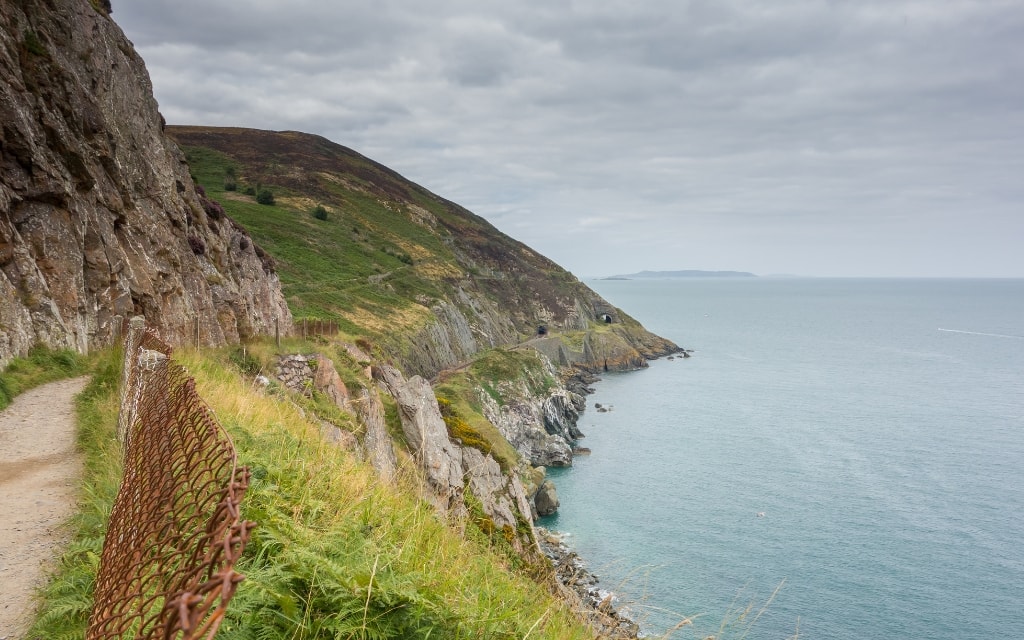
As you arrive in Bray, you will see Bray Head ahead of you. With a cross on top. Most people go straight to the top to the cross, but if you have more time, I recommend doing the whole circuit. It is 5.5 km long and any moderately fit hiker can easily manage it. At the top, there is a small refreshment in the caravan (from Friday to Sunday). For a more detailed description of the route, see here.
Previously it was possible to follow the route as far as the town of Greystones. However, near Greystones, massive landslides have begun, making the trail impassable and truncated. But it didn’t take away from its impressiveness.
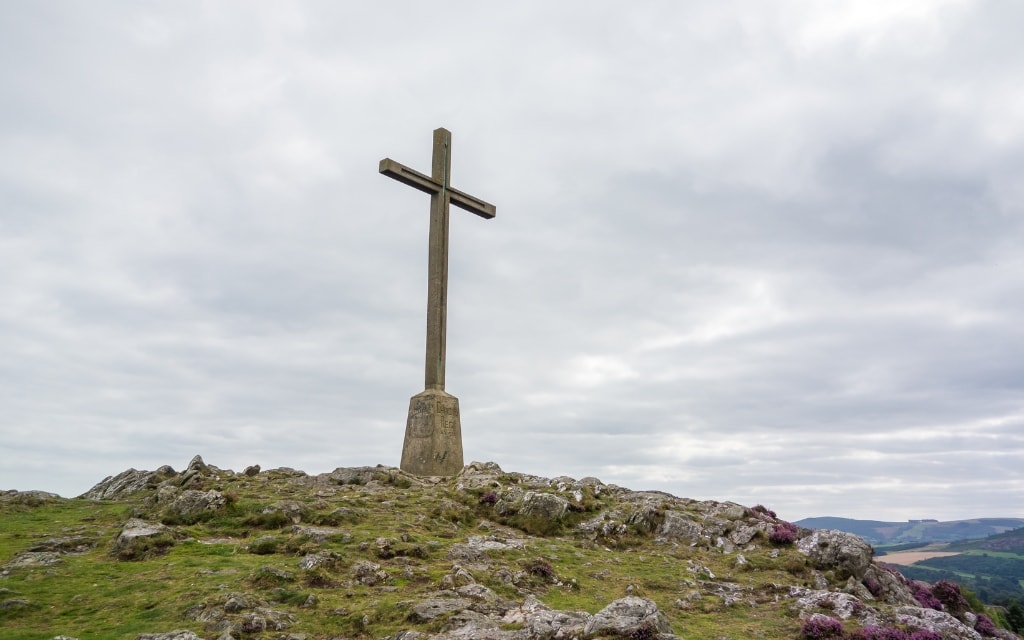
How to get to Bray
DART: Bray is easily accessible from Dublin city centre. Get on the DART and get off in 45 minutes in Bray. The beach extends a short distance behind the railway station. Or walk for about 20 minutes to the start of the route along Bray Head. With the Leap Visitor Card, transportation is included.
Car: If you are driving and going to Bray Head, park on the edge of the reserve. There is free parking.
Day trips around Dublin – map
HOW TO USE THIS MAP: Above you will find a detailed list of tips for trips from Dublin. Click at the top left of the map to see separate layers with highlighted locations. You can hide and show the different layers or click on the icons on the map to see the names of the places I mention in my guide on what to visit around Dublin. If you want to save the map, star it. For a larger version, click on the icon in the upper right corner.
Plan your trip quickly and easily. If you buy something through our links, we get a small commission. You pay nothing extra. Thank you!
These were our tips for day trips from Dublin. Do you have a question? We’ll be happy to answer it in the comments below. Have a safe journey!
More information about Ireland
DUBLIN: Check out our 20 tips on things to do in Dublin (+ more useful information and tips for your trip). Here is a detailed guide to transport in Dublin.
IRELAND: Get inspired with 25 things to do in Ireland.
RENT A CAR: Here’s a detailed guide on how to rent and drive a car in Ireland (prices, requirements, procedure, driving tips and what to avoid).
